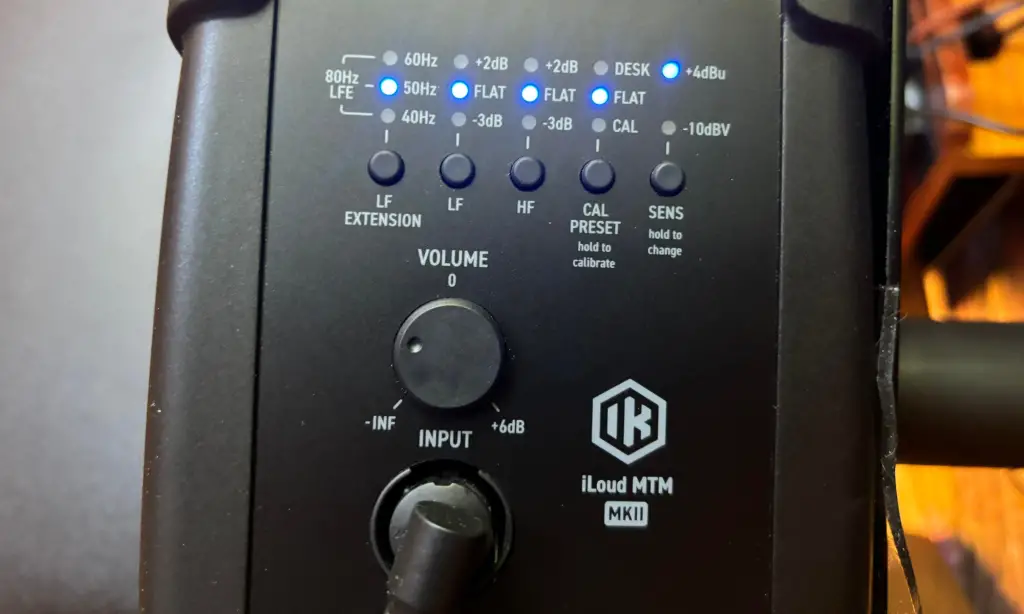Table of Contents
I’ve said it before, and I’ll say it again (probably by the end of this article) but the most important investments in your studio should be your audio interface and your studio monitors. If you can’t accurately check what’s coming out of your DAW, then every EQ move, compression setting you adjust, and reverb you apply will be more or less a shot in the dark.
While a fair number of studio monitors seem to be hitting the market these days, at NAMM 2024 alone, we saw a handful of exciting debuts; how many reinvent the wheel? Well, if you were at NAMM, you probably saw a couple of exciting product drops, but they all were aimed at pro-tier level producers who have $5k+ to drop on a monitor set.
Not many of us have that budget, so what about the talented hobbyist producers, working-class producers, and artists who need to get the most out of their studios and pocketbooks? Most monitors aimed at producers like that may be fresh product lines, but they are far from reinventing the wheel… probably because they feel they don’t have to.
But when I got my hands on the iLoud MTM MKII from IK Multimedia, my above assumption was blown out of the water as these monitors have a LOT to write home about and might redefine what small-space monitors are capable of (or at least what we should expect from them). So, let’s start this comprehensive iLoud MTM MKII Review. by simply breaking down what these monitors are before diving into my hot takes, what I loved about them, what I didn’t like, who they are for, and why they got the accolades we gave them.
[embed]https://youtube.com/watch?v=EPpSs4ALrUs&si=1wdCPgYKrYz_CzNF[/embed]What Is The iLoud MTM MKII?


The iLoud MTM MKII is a reference monitor designed to provide high-quality sound with increased efficiency and precision. It features improved drivers and double the processing power compared to its predecessor, making it suitable for professional mixing and mastering in various environments. The MTM MKII’s MTM (Midrange-Tweeter-Midrange) design ensures a clear, neutral sound with a controlled low end, enabling accurate audio reproduction and reducing listener fatigue during extended sessions.
One of the standout features of the iLoud MTM MKII is its advanced ARC (Automatic Room Correction) technology, which enhances acoustic performance in any space within seconds. The X-MONITOR software offers deep customization and emulations of over 20 top studio monitors when connected to a computer. It allows users to A/B their mixes for perfect translation across different playback systems. This integration turns the MTM MKII into a versatile monitoring tool that adapts to various studio setups.
The iLoud MTM MKII’s design includes a pair of 3.5″ high-performance woofers and a 1″ high-definition tweeter, providing superior volume and clarity. Its symmetrical configuration ensures precise sound definition, making it ideal for near-field monitoring. The monitor’s tight vertical dispersion minimizes acoustic interactions, while its wider horizontal dispersion creates a broader sweet spot for easier mixing. These features, combined with improved power efficiency and extended max SPL, make the MTM MKII suitable for use as a front-of-house mixing monitor and for other volume-dependent tasks.
Editor’s Choice Awards

Last year we rolled out the editor’s choice award to highlight some of the best, most innovative, and high-value products to hit the market each year. While I will spend the next few thousand words talking about the specifics of why I loved these monitors so much and what I was so impressed by after using them in the studio for the last month and a half, I wanted to let it be known as early on as possible that these monitors are best in class.
Now, let’s dive into some of their better and better features!
iLoud MTM MKII Review – What I Loved
They’re “ULTRA” Nearfield

It’s really wild to me that the majority of producers and artists are creating in tiny spaces—usually, a desk nook in a bedroom or a bonus room turned studio—and yet most studio monitors on the market these days have amps and drivers optimized for rooms twice the size of what we’re mostly creating music in. If my listening position should be the same distance away from each monitor as the two monitors are away from each other, forming a perfect triangle between the two speakers and myself, shouldn’t monitors be small and compact enough so that they both don’t take up the bulk of your small space and allow you to maintain that perfect ration for the most ideal listening position? And shouldn’t they also have enough high-quality, efficient drivers and amps to produce sound quality at least on par with larger studios?
Okay, that was a dense question, so let me give you the TLDR answer about how the iLoud MTM MKII knocks this out of the park…
The iLoud MTM MKII has a small design and incredibly high-quality internals. This means it’s designed for smaller spaces where the monitors are an arm’s length away from you (give or take a few inches, of course). You can get big-room sound quality in small and less-than-ideal creative spaces, exactly what most modern producers do.
With the iLoud MTM MKIIs, IK Multimedia met the modern producer where they’re at instead of trying to solve a past decade’s problem and, in doing so, might have just reinvented – or at least redefined – the wheel of what on the best mid-tier monitor for small studios and working producers.
This is the perfect segue to my next point!
They’re Incredible Value For The Price
These studio monitors achieve all of the above while offering a ton of extra bells and whistles that almost any other monitor on the market these days doesn’t even bother to include. So, let’s highlight some of the pretty impressive stuff you get with these monitors outside of just the actual monitors themselves.
A/B Reference

X-MONITOR is IK Multimedia’s software that lets you quickly and easily switch between referencing voices that mimic different listening environments or systems. It does this by simulating different phase and frequency responses pulled as accurately as possible from some of the industry’s most popular studio monitors and referencing environments. This allows the broadest range of referencing and A/B testing you could get, which is simply amazing and something I wish more monitors/plugin combinations offered.
This software has over 20 different sound profiles and emulation, which allows you to quickly cycle through different versions and hear how your mix will sound on different speakers. This saves time and energy when finalizing your mixdowns.
Arc Control
I am a massive fan of the Arc system after reviewing the latency-less room correction technology that IK Multimedia brought to market with their Arc Studio; it single-handedly replaced the Sonarworks that I had used in my studio for years (a tech that I had long had frustrations with but put up with because room correction is so necessary).
But the fact that this tech comes stock in the monitors, complete with a mic and everything to calibrate your room, is something that every single producer needs to get it as early in their careers as possible. And while you don’t get the Arc Studio that I described earlier, you still get the mic and access to the room correction software, which is of great value in and of itself.
Sure, these monitors are a bit more expensive than the average entry-level or mid-tier monitors. Still, I think the extra quality-of-life features that the iLoud MTM MKII comes with help justify the price increase and make it an excellent bang for your buck.
Great Drivers = Killer Sound

After making music for the better for a decade and having been a professional gear reviewer and commentator for the last three-ish years, I’ve learned that there aren’t many things you can invest in that single-handedly level up your sound and the quality of your productions. While there’s lot of fun synths to play or acoustic treatment you could throw on your walls, everything pales in comparison to getting a dope set of monitors and pairing it with as good of an audio interface as you can afford.
Upgrading to these monitors from my new generations of KRK Rokits, a fantastic set of monitors in their own right, albeit designed for a completley different audience, was as night and day to each other as dubstep is to folk music. The drivers and amps in the iLoud MTM MKII give you incredibly detailed sound, with crisp transients and the ability to hear every detail in the mix. Hearing things such as how much mid-range my reverb has or if the transient information on my snares is too much for the track is utterly transparent and removes the need for guesswork in even some of my most detailed-oriented mixing decisions.
Don’t let the size and price of these monitors fool you; they have a crystal clear, high-definition sound that, especially when coupled with a killer audio interface like my Arturia AudioFuse 16Rig USB Audio Interface, is so clear I could almost touch it.
What I Wasn’t Crazy About
The Monitor Volume Can Be Tricky To Balance

Getting the right balance between my monitors and my sub usually requires me to adjust the volume output of the monitors. And while the KRK Rokits I had before had a click-driven volume adjustment, which would adjust the output by .1dB every click, the MKIIs had a fluid and click-less rotary. The clicks on the KRKs made it super easy to balance the volume of BOTH monitors against the sub, as I would know that if both monitors were five clicks counterclockwise from 0dB +/-, they would have identical outputs. In contrast, the MKII relied more on using your ears to ensure that the left and right monitors were the same volume.
Luckily, my listening position is only about an arm’s length away from the monitors, and hearing the subtle differences in sound required to balance the speakers didn’t take much time. Still, it was something that I felt needed to be commented on. And hey, if this is one of the worst things I could find about these monitors, it must be obvious that I’m scraping the bottom of the barrel here in terms of critiques, as I do think these monitors are damn impressive.
Who Is The iLoud MTM MKII For?

Dedicated Producers In Small Studios
If you haven’t gotten this message by now, I’ll spell it out as plainly and clearly as possible here…
These monitors are incredible for small studios and less-than-ideal spaces. Suppose your studio is in your bedroom, a spare room, a bonus room, or any other space that hasn’t been built from the ground up with the sole intention of being an acoustically perfect space. In that case, these monitors are about as great a solution as you could ask for.
They produce incredible audio quality, are super compact, and add a ton of extra value for producers. It’s almost as if IK Multimedia designed these monitors specifically for these devoted hobbyists and entry-level professional producers and went above and beyond to create the best-in-class monitor for this market and for this price point.
Big Studio Engineers Who Need Reference Monitors
Tons of big-budget studios have their go-to monitors like a $20k+ Barefoot systems. However, having a smaller system for reference is just as necessary as having a bigger, premium set. The MKIIs are ideal for this, as they don’t take much room in the studio and are at their best when placed super close to the listening position compared to most larger monitors, which usually require a few feet of separation to get the best-sounding audio from them.
Plus, some of the added techs, like room correction and the X-CONTROL referencing software, are good, too, even if they’re a bit superfluous for a studio of this caliber.
Another thing going for the MKIIs for big-budget studios is that they are a fantastic way to stock your studio with enough monitors for spatial audio, as the small design and profile make them easy to hang on walls and ceilings. IK Multimedia even offers bundle discounts for those looking to kit their studios with MKIIs for spatial audio!
Audio Editors
Everyone seems to be a content creator these days.
With only so many hours in the day, many people are outsourcing their audio editing to others, meaning that even entry-level audio editors are making some serious coin. If you work a lot with editing audio of any kind, be it mixing audio for film, content creation, podcast editing, etc., the MKII is one of the best monitors on the market for this purpose.
They’re small and compact, have incredible internals that produces accurate and tangible audio and has different sonic profiles that can highlight different frequency ranges depending on whether you’re mixing vocals, music, or whatever. They also need extra clarity and attention driven to a single element or layer.
Where To Go From Here
Learn a bit more about what other people are saying about the iLoud MTM MKII so that you can get a more well-rounded perspective on whether these are right for you.
[embed]https://youtube.com/watch?v=WTwnT1Wvgbw&si=ic0wXGpljLBZjlIo[/embed] [embed]https://youtube.com/watch?v=a_pCCse0XEM&si=ClxLypE7DGwovvcO[/embed] [embed]https://youtube.com/watch?v=B_S_FUBH4cI&si=PKobTvSYzx4R4RqN[/embed]The post iLoud MTM MKII Review: 5 Ways IK Multimedia Brings Insane Sound To Small Studios appeared first on Magnetic Magazine.



